Hi! I'm Leilton,
a biologist with a broad interest in how species adapt, diversify, and become extinct in a changing world
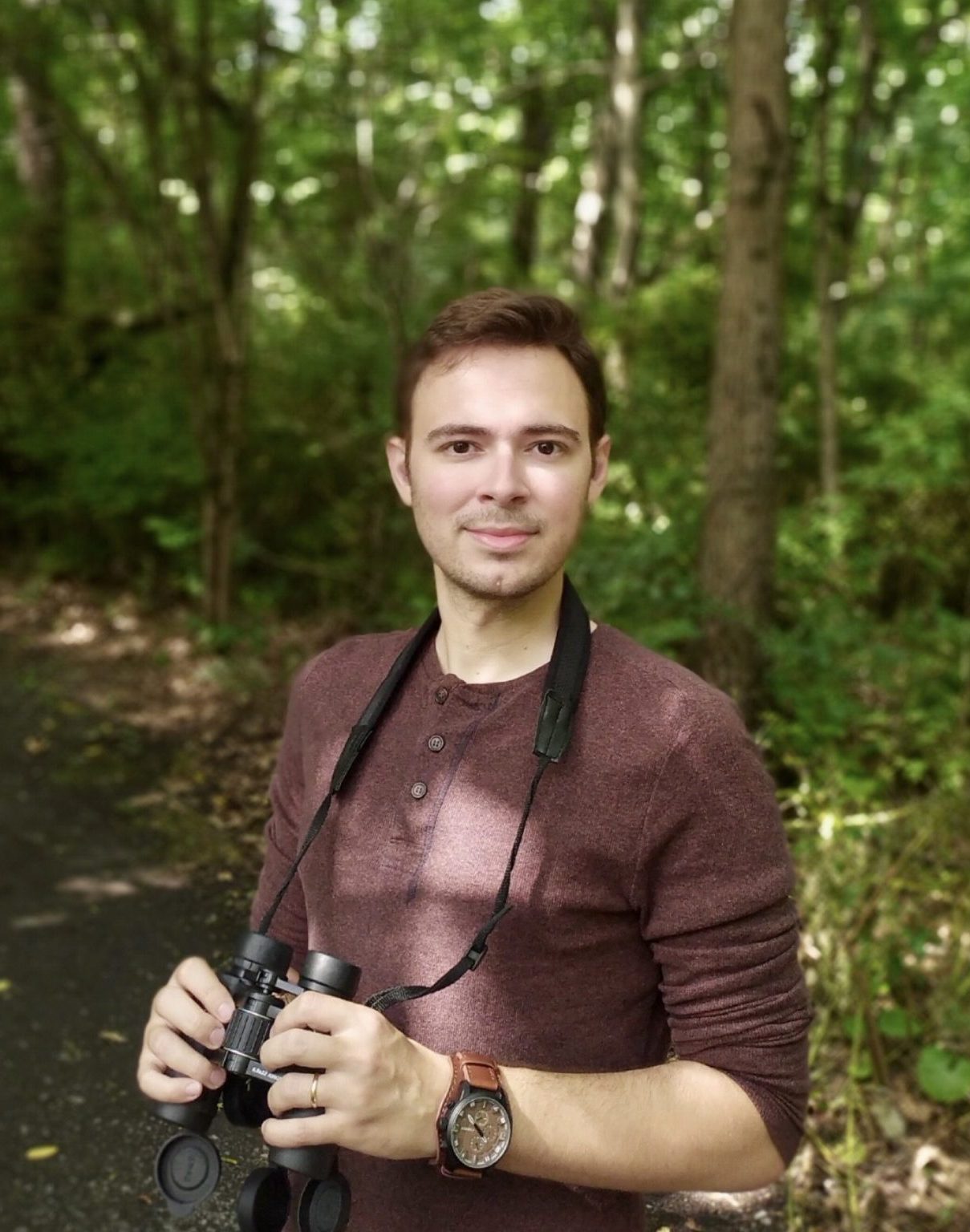
About me
Welcome to my website! Here you will learn about my main research interests, my published scientific articles, the students I help advise, and exciting expeditions in which I have participated.
I am currently a postdoctoral researcher at Pennsylvania State University in the Department of Ecosystem Science and Management. I got my Ph.D. in Zoology from the Federal University of Pará and the Emílio Goeldi Museum, associated with the Laboratory of Avian Diversity – LADY at the Finnish Museum of Natural History.
My main interest in science is (1) the connections between the evolution of Earth’s history and organisms, (2) ecological contributions to processes that generate biodiversity, and (3) the application of population genetics to the conservation of endangered species.
When I am not working, you can find me reading medieval fantasy books, playing video games (or tennis), or just having a nice cup of coffee listening to the Bossa Nova.
RESEARCH
Revealing patterns of diversity in Amazonian floodplains avifauna
The Amazon biome is home to an outstanding diversity of species, and this phenomenon caught my attention. During my Ph.D. (2017-2021) I investigated patterns and processes of genetic differentiation within bird species specialized in floodplains. These seasonally flooded environments have a rich avifauna that has been neglected in early Amazonian biogeographic studies. In this research, I am interested in how ecological, climatic, and paleogeographic processes have driven connectivity along Amazonian floodplains and generated the current pattern of structure and genetic diversity within species and communities. For more details, see the recent paper published in the Journal of Biogeography in collaboration with Dr. Alexandre Aleixo and Dr. Camila C. Ribas.
How species' ecological traits shape their genetic diversity
Can differences in habitat affinity shape genetic diversity within a biological community? This question led me to analyze how birds associated with Amazonian floodplains interact with the seasonal flooding cycles of their habitats. Here, I compared the genetic structure of a dozen birds with different ecological traits to predict how patterns of genetic variation are spatially accommodated in a seasonally dynamic environment. This research has been a challenging quest, and I hope to publish exciting results soon.
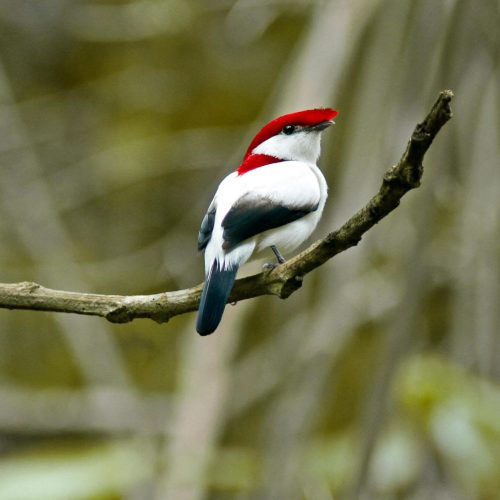
Genetics applied to the conservation of endangered species
Information on genetic structure and diversity, as well as gene flow and inbreeding levels, is valuable for the conservation of endangered species. Since my undergraduate degree (2011-2015) and during my Master’s degree (2015-2017), I have been investigating the genetic diversity of the critically endangered Araripe Manakin (Antilophia bokermanni). The Araripe Manakin is a charismatic bird, listed among the world’s most endangered birds. This species inhabits a 32 km2 tract of humid forest in the foothills of the Chapada do Araripe, northeastern Brazil, and has been suffering population decline due to habitat deterioration mainly because of human activity and prolonged dry seasons. My mission is to monitor genetic diversity and inbreeding levels to detect and mitigate demographic effects that may lead the species to the fatal fate of extinction. This research has led me to collaborate with the Associação de Pesquisa e Preservação de Ecossistemas Aquáticos (AQUASIS) and the Manakin Research Coordination Network (RCN). Also, Dr. Péricles S. Rêgo (Federal University of Pará) and Weber Girão e Silva (coordinator of the Araripe Manakin conservation project) are partners in this research project.
Species adaptive response to global climate change
Global warming is a fact! Now, as an evolutionary biologist, I feel responsible for unraveling the consequences of climate change on the organisms’ adaptive and evolutionary processes. My experience with genomic methods, along with the enormous availability of climate data and predictive models of future climate conditions, are powerful modern tools that can help me address these issues. I also believe that the importance of historical collections of species deposited in museums and universities can give further insight into which traits are better adapted or undergoing rapid modification in a changing world. As my new research line, I look forward to collaborations that specifically seek to address these questions.
(Figure on the right) Recent research where we investigated how historical changes in the climatic niche of the migratory Sooty Swift (Cypseloides fumigatus) drove morphological and genetic changes in a peripheric population. Paper published in Journal of Ornithology.
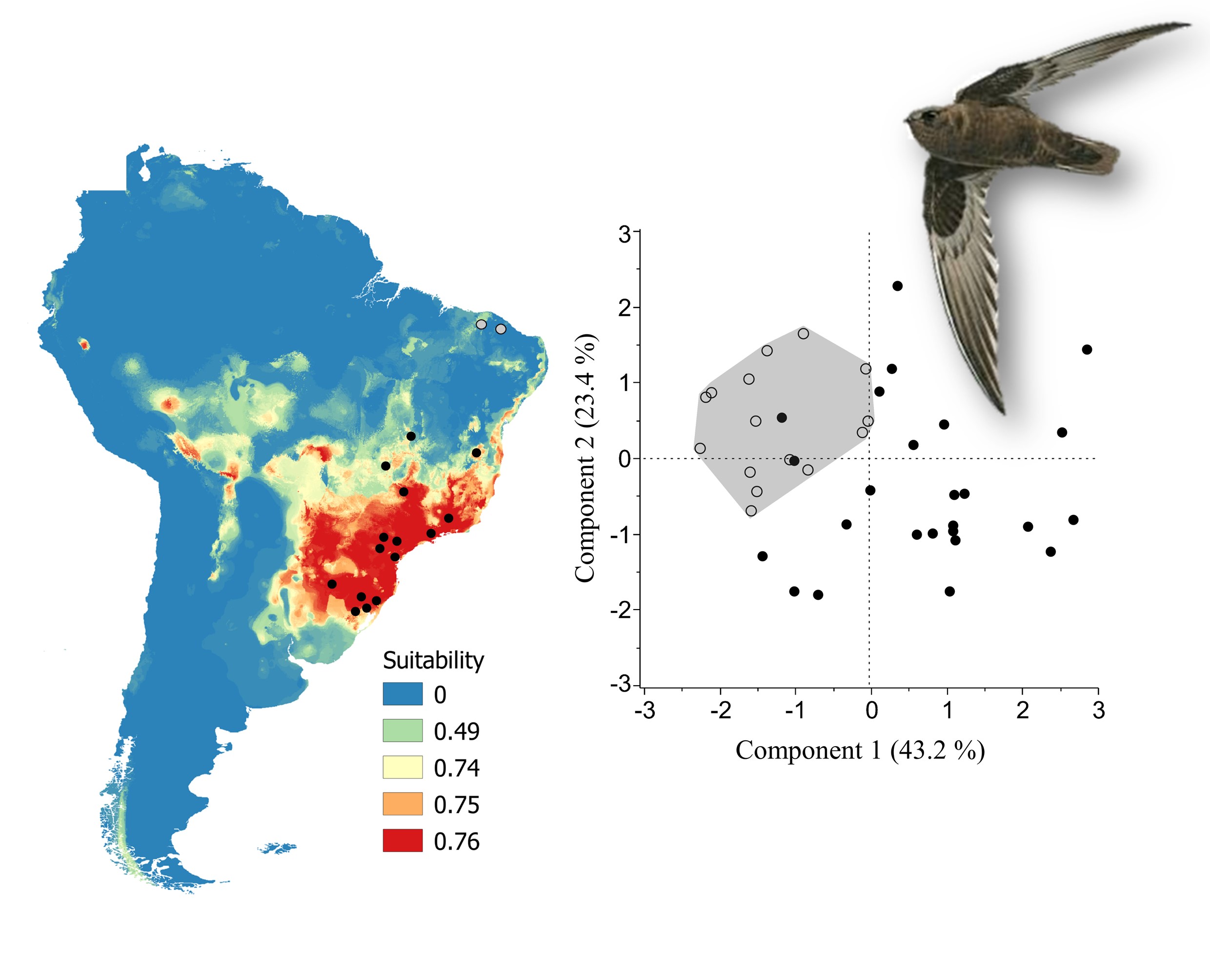

Genomics for Wildlife Management
One of my lines of research focuses on using genomics for wildlife management, specifically using the Ruffed grouse (Bonasa umbellus) as a case study. This native North American game bird has experienced population reductions due to habitat loss and the emergence of the West Nile virus (WNV), particularly in the Appalachian Mountains region of Pennsylvania. By utilizing genomic data from grouse populations in Pennsylvania, my research aims to identify genetically unique population units that require special management attention, assess the impacts of habitat fragmentation on population connectivity, and investigate the historical influence of WNV on changes in genetic diversity. Overall, this research aims to inform effective wildlife management strategies for the conservation of Ruffed grouse populations.
This work is part of my postdoctoral research at Pennsylvania State University, in the Laboratories of Julian Avery and David Toews, and in partnership with the Pennsylvania Game Commission.
PUBLICATIONS
Here are published papers, in press, or under peer review. For published papers, if you cannot access them through the journal’s website, please contact me and I will be happy to make them available.
2023
14. Luna LW, Williams LM, Duren K, Tyl R, Toews DPL, Avery JD (2023) Whole genome assessment of a declining game bird reveals cryptic genetic structure and insights for population management. Molecular Ecology. https://doi.org/10.1111/mec.17129
13. Paulo P, Teófilo FH, Bertuol C, Polo É, Moncrieff AE, Bandeira LN, Nuñez-Penichet C, Fernandes IY, Bosholn M, Machado AF, Luna LW, Peçanha WT, Rampini AP, Hashimoto S, Dias C, Araripe J, Aleixo A, do Rêgo PS, Hrbek T, Farias IP, Peterson AT, Kaefer IL, Anciães M (2023) Geographic Drivers of Genetic and Plumage Color Diversity in the Blue-Crowned Manakin. Evolutionary Biology. https://doi.org/10.1007/s11692-023-09613-4
12. Williams JW, Taylor A, Tolley KA, Provete DB, Correia R, Guedes TB, Farooq H, Li Q, Pinheiro HT, Liz AV, Luna LW, Matthews TJ, Palmeirim AF, Puglielli G, Rivadeneira MM, Robin VV, Schrader J, Shestakova TA, Tukiainen H, von der Heyden S, Zizka A (2023) Shifts to open access with high article processing charges hinder research equity and careers. Journal of Biogeography, 50(9), 1485-1489. https://doi.org/10.1111/jbi.14697
11. Luna LW, Naka LN, Thom G, Knowles LL, Sawakuchi AO, Aleixo A, Ribas CC (2022) Late Pleistocene landscape changes and habitat specialization as promoters of population genomic divergence in Amazonian floodplain birds. Molecular Ecology, 32(1), 214-228. https://doi.org/10.1111/mec.16741
2022
10. Luna LW, Silva SM, Silva WAG, Gaiotti MG, Macedo RH, Araripe J & Rêgo PS (2022) Genetic monitoring of the Critically Endangered Araripe Manakin (Antilophia bokermanni) reveals stable genetic diversity despite recent population decline. Ornithological Applications, 124(2): duac009. https://doi.org/10.1093/ornithapp/duac009
9. Luna LW, Dias C, Pichorim M, Leandro-Silva V, Biancalana RN, Silva WAG, Araripe J & Rêgo PS (2022) Historical climate change as driver of population range expansion and differentiation in a rare and partially migratory Neotropical bird. Journal of Ornithology, 163: 495-507. https://doi.org/10.1007/s10336-021-01948-z
8. Barbosa WES, Ferreira M, Schultz ED, Luna LW, Laranjeiras TO, Aleixo A & Ribas CC (2022) Habitat association constrains population history in two sympatric ovenbirds along Amazonian floodplains. Journal of Biogeography, 49(9): 1683-1695. https://doi.org/10.1111/jbi.14266
7. Luna LW, Ribas CC & Aleixo A (2022) Genomic differentiation with gene flow in a widespread Amazonian floodplain-specialist bird species. Journal of Biogeography, 49(9): 1670-1682. https://doi.org/10.1111/jbi.14257
6. Souza TO, Luna LW, Araripe J, Silva WAG & Rêgo PS (2022) Peripheral isolation and demographic stability are reflected in the genetic diversity of the populations of the Helmeted Manakin, a bird endemic to the gallery forests. Annals of the Brazilian Academy of Sciences, 94(4): e20201206. https://doi.org/10.1590/0001-3765202220201206
2019
5. Souza TO, Luna LW, Araripe J, Melo MAD, Silva WAG, Schneider H, Sampaio I & Rêgo PS (2019) Characterization of the genetic diversity and population structure of the manakin genus Antilophia through the development and analysis of microsatellite markers. Journal of Ornithology, 160: 825-830. https://doi.org/10.1007/s10336-019-01655-w
2018
4. Amaral FR, Maldonado-Coelho M, Aleixo A, Luna LW, Rêgo PS, Araripe J, Souza TO, Silva WAG & Thom G (2018) Recent chapters of Neotropical history overlooked in phylogeography: Shallow divergence explains phenotype and genotype uncoupling in Antilophia manakins. Molecular Ecology, 27:4108-4120. https://doi.org/10.1111/mec.14843
3. Luna LW, Silva WAG, Araripe J, Pereira ITF, D’Horta FM, Sampaio I, Schneider H & Rêgo, PS (2018) Mutations in the melanocortin-1 receptor (MC1R) gene have no influence on the distinct patterns of melanic plumage found in the manakins of the genus Antilophia (Aves: Pipridae). Annals of the Brazilian Academy of Sciences, 90: 2873-2879. http://dx.doi.org/10.1590/0001-3765201820171003
2017
2. Luna LW, Souza TO, Carneiro LS, Silva WAG, Schneider H, Sampaio I, Araripe J & Rêgo PS (2017) Molecular data and distribution dynamics indicate a recent and incomplete separation of manakins species of the genus Antilophia (Aves: Pipridae) in response to Holocene climate change. Journal of Avian Biology, 48:1177-1188. https://doi.org/10.1111/jav.01378
1. Luna LW, Souza TO, Silva WAG, Schneider H, Sampaio I, Araripe J & Rêgo PS (2017) Genetic variation of the endangered Araripe Manakin (Antilophia bokermanni) indicates a history of demographic decline. Ornithology Research, 25:60-66. https://doi.org/10.1007/BF03544378
Silva FE, Luna LW, Batista R, Röhe F, Gubili C, Farias IP, Hrbek T, Amaral JV do, Ribas CC, McDevitt AD, Dellicour S, Flot J-F, Boubli JP (2023) The impact of Quaternary Amazonian river dynamics on patterns and process of diversification in uakari monkeys (genus Cacajao). BioRxiv. https://doi.org/10.1101/2023.06.23.546215
Luna LW, Ribas CC, Aleixo A. Habitat-specific dispersal predicts spatial genetic variation in the Amazon floodplain bird community.
MENTORING
Fernanda Freitas
co-advised with Péricles Rêgo; fernandafreitasufpa [at] gmail.com
Fernanda Freitas is a master’s student in environmental biology at the Federal University of Pará, Brazil. She is a passionate birdwatcher and an expert in the visual and vocal recognition of Amazonian birds. In her master’s dissertation, Fernanda investigates how different environmental conditions across South America Biomes shape the structure and genetic diversity of the Fuscos Flycatcher (Cnemotriccus fuscatus).

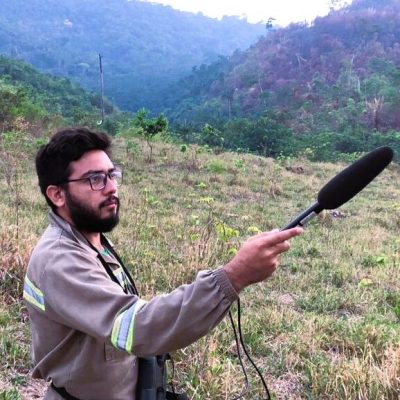
Danielson Aleixo
co-advised with Péricles Rêgo; danielsonaleixo [at] gmail.com
Danielson is a master’s student in environmental biology at the Federal University of Pará, Brazil. He has been doing bird surveys and conducting birdwatching groups since he was 13 years old, a practice that allowed him to recognize the sound of Amazonian birds. In his research, Danielson is interested in investigating the evolutionary drivers of variation in the morphological, vocal, and genetic traits of the Plain Softail (Thripophaga fusciceps), a bird specialized in the Amazonian floodplain.
Stella Nobushige
co-advised with Lincoln Carneiro; stellaylima[at] gmail.com
Stella is a master’s student in Zoology at the Emílio Goeldi Museum in partnership with the Federal University of Pará, Brazil. She has been working with animal evolution and genetics since her undergraduate studies, focusing mainly on bird groups such as storks, falcons, and passerines. During her master’s degree, Stella aimed to understand the demographic history of a complex of Amazonian species, the Antpittas (Myrmothera campanisona/simplex/subcanescens), and how biogeographic events played a role in the diversification of this lineage.
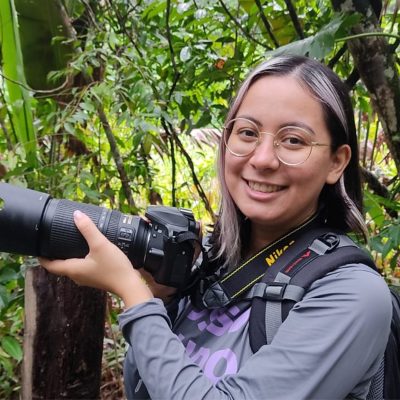
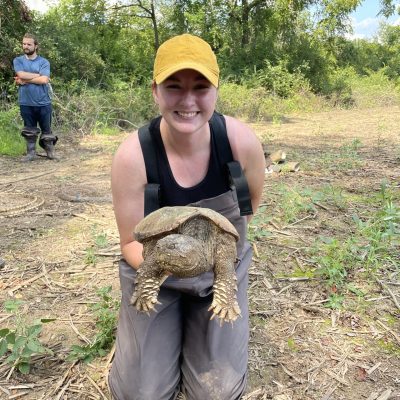
Amanda Haft
Undergrad student; ajh6824[at] psu.edu
Amanda Haft is enrolled at Penn State University working towards a double major in Wildlife & Fisheries Science and Environmental Systems Engineering. While she is still trying to find her niche, her experience studying the population genomics of ruffed grouse has influenced her professional journey. In the future, Amanda plans on combining her experience in engineering and wildlife sciences to work in creative ways to protect and maintain wildlife and the environment. Possible career paths that she is considering are environmental consultation, environmental policy, and wildlife biology.
After long days at work, she enjoys hiking and practicing her bird identification in Bear Meadows Natural Area. When the weather doesn’t permit those activities, she settles for reading a good book.
EXPEDITIONS
Navigating in the heart of the Amazon Basin
Together with an extraordinary team of ornithologists and herpetologists from the Amazon Research Institute (INPA) headed by Dr. Camila C. Ribas, I navigated the middle Solimões River (from Manaus to the Mamirauá Reserve) to collect tissue samples, acoustic and ecological information from birds, reptiles, and amphibian species. The expedition took place throughout October 2017, during the dry season. This fieldwork was funded by the U.S. Agency for International Development and the information collected was integrated into my doctoral thesis.
Exploring the oases of humid forests within the dry vegetation of the Brazilian Caatinga
During the summer of 2015 and 2017, I was in the high-altitude forests in the Araripe, Ubajara, and Baturité mountain ranges in Northeast Brazil. These humid forests are home to rich endemic biodiversity and are true oases, as they are surrounded by the arid landscape of the Caatinga. In addition, these forests are home to endangered species, such as the Araripe Manakin (Antilophia bokermanni), the Grey-breasted Parakeet (Pyrrhura griseipectus), and a subspecies of the Band-tailed Manakin (Pipra fasciicauda scarlatina). On these expeditions, our goal was to collect blood samples from these endangered species (especially the Araripe Manakin who was the subject of my master’s thesis), to assess and monitor genetic variability. Some of this fieldwork was headed by Dr. Péricles S. Rêgo (Federal University of Pará) and funded by the Conselho Nacional de Desenvolvimento Cientifico e Tecnológico (CNPq).
Venturing into the gallery forest corridors of the Cerrado savannas of South America
In June 2016, two colleagues and myself (Dnilson Ferraz and Thainara Sousa) traveled through the savannas of Central Brazil. Our goal was to collect biological samples of specialized gallery forest birds, particularly the Helmeted Manakin (Antilophia galeata), which was the subject of Thainara’s Ph.D. thesis. The motivation of this expedition was to understand the role of the watersheds of Central Brazil (e.g., Paraná River) and the contraction of gallery forests due to past climate change, in driving genetic differentiation within the Helmeted Manakin as well as other Cerrado birds.